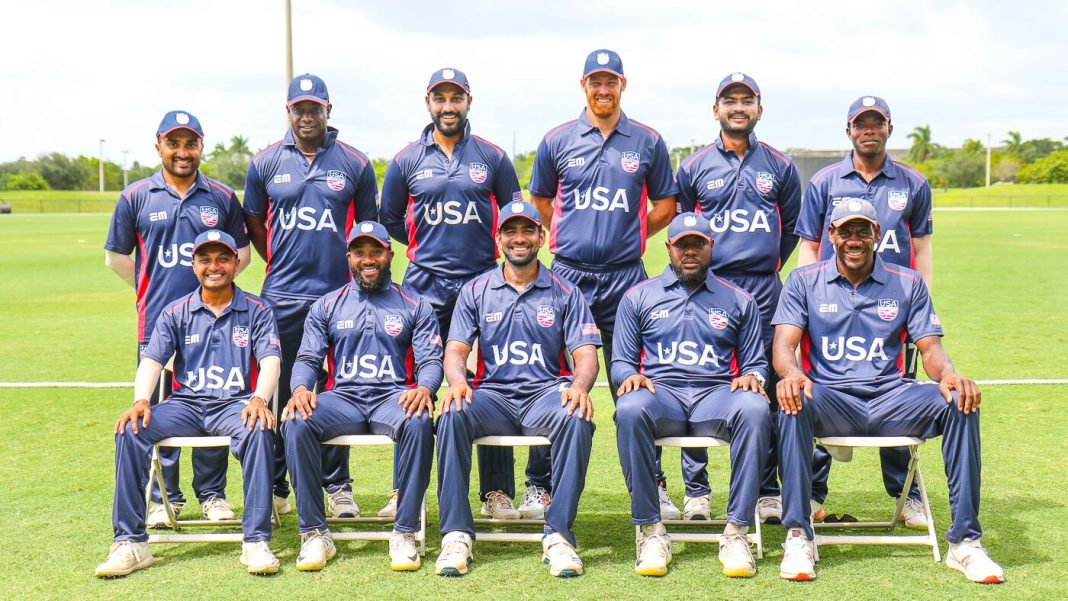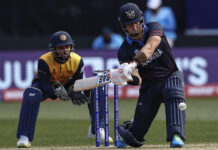Minor League Cricket: A pathway, but for whom?
Minor League Cricket (MiLC) provides an opportunity for young domestic cricketers to exhibit their talent on a bigger stage against stronger competition, and represents a long-awaited pathway into the national team. First class and international cricketers continue to sign contracts with Major League Cricket (MLC), and these players will also compete in MiLC as part of the deal. After three years’ residence in the USA, these players will be eligible for USA Cricket’s men’s senior international team. While this will help strengthen the competition for domestic cricketers in the Minor League, the big question shifts from ‘where’s the pathway?’ to ‘who is the pathway for?’
For those new to the conversation: Minor League Cricket and Major League Cricket are a product of a partnership between USA Cricket and American Cricket Enterprises (ACE). Minor League Cricket was scheduled to launch and run throughout the summer of 2020, with games every weekend. Major League Cricket was supposed to follow with a more traditional franchise T20 schedule in the summer of 2021, but COVID-19 changed the plans. Instead, Minor League Cricket held an abbreviated, regional exhibition season in September and October 2020. The new plan is to launch Minor League Cricket in full during the 2021 summer, with Major League Cricket to come in 2022.
Clearly, these recruited First class cricketers have their sights set on representing the USA on the international stage. The plan is out in the open, and recently confirmed by ACE co-founder Sameer Mehta, specifying that ACE/MLC are looking for players interested in international play. To the chagrin of current national team players, this recruitment haul coincides with USA Cricket contract pay being reduced by more than half.
Yes, the MLC buys their own players and USAC pays their own players, but looking closer we can understand why a national team player would feel distress. Minor League Cricket has been pitched as the official pathway to the USAC T20 team. If this is the case, it’s vital that the best cricketers in the country buy in, and they absolutely should. The vast majority of them have so far, and some are sacrificing a bigger paycheck with their usual club to do so. From what I’ve seen, the players are happy to do this, provided the MiLC is a path to bigger things.
To many, MLC’s overseas recruiting represents the floor of a slippery slope argument, and some in the American cricketing community have their guard up. MLC is banking on what they consider to be better cricketers in order to fast-track their product. Perhaps they’re better cricketers, perhaps they just appeal more to potential MLC investors. While MLC absolutely needs a good product and reliable investors, cricket in the USA also needs the enthusiasm, hope, and especially participation of home grown domestic talent.
Compromises
How can USA Cricket and Major League Cricket stay competitive while also providing good chances for American cricketers? USA Cricket can start by ensuring that some roster spots are reserved for homegrown cricketers.
For the sake of this article, I’ll define ‘homegrown’ cricketers as those who have resided in the United States long enough to have once qualified for the U19 team (not necessarily having been on a USAC U19 team), as well as those who were born in the USA. Also for the sake of the article, I’ll recommend that at least three out of every 14 (21.43%) contracts be reserved for homegrown cricketers. This ratio should not drop below three out of 14, meaning if USAC decides to contract a 15th player, he must also be classified as homegrown. Additionally, every USAC team selected for a competition, either home or abroad, would need to be composed of at least three homegrown players. The playing eleven would be left to the coach from there, with no homegrown requirement.
Would this rule have affected the composition of the most recent USA team which travelled to Nepal in February? No. Nisarg Patel and Steven Taylor both represented USAC at the U19 level, Aaron Jones and was born in Queens, New York, and Nosthush Kenjige was born in Alabama. All four of them received game time on the Nepal trip, with Nisarg scoring the fastest half century in USA ODI history being one of the few bright spots.
Major League Cricket should have slots reserved for American cricketers, and the hope is that there will be further distinctions made between homegrown and imported players. For the sake of this article, I’ll suggest at least three homegrown players per team roster and at least one homegrown player in every playing eleven. This would be mandated regardless of however many American cricketers are required in the playing eleven overall (I would hope four or five). Fans would then be encouraged to embrace non-homegrown USAC players such as Saurabh Netravalkar, and recent resident players not yet qualified for USAC such as Corey Anderson and Dane Piedt as ‘American cricketers,’ while also protecting chances for players born or developed in the USA.
Proactive planning would increase mandates eventually for home grown inclusion in both the men’s senior national team and the MLC. This would signal dedication to player development. Eventually, the hope is that such mandates would become unnecessary.
The next compromise is nearly as important as ensuring chances: compensation. Considering that the CPL pays ICC Americas players only $3,000 per season, and that Canada’s GT20 did such a poor job of paying Canadian cricketers (if they were paid at all), it’s prudent to wonder if the MLC will pay Americans well. In August, I asked USAC director and ACE Relations Committee Chair Suraj Viswanathan about this, and he acknowledged the importance, answering ‘yes, (MLC) will prioiritise USA players’ pay; definitely will be much higher than GT20 and CPL.’ This assurance is comforting, but let’s hope some further clarity can be made in the near future.
One way to handle this would be to select American and homegrown cricketers in an auction style, rather than fixed pay slots. Fixed pay slots would not distinguish the quality or demand of a player, and domestic cricketers deserve respect and distinction just as overseas players do.
The top pay category for homegrown could have a floor of something like $50,000 and no ceiling. Teams would take turns bidding on players in this category, until a player is won. Popular players like Ali Khan (a resident since age 18) could sell for well over the floor price when the dust settles, while others would go near or at the floor price. In the next round of homegrown players, the floor could be set at $30,000, with a ceiling at $50,000. A team could win a player in this round unopposed, simply by bidding at the ceiling. The third round could start at $20,000 with a ceiling of $30,000. Over time, the value of these categories and/or the number of slots should increase.
I believe these are mostly modest compromises, but they could help tame the speculation that come with unanswered questions. By ensuring that homegrown players will have a chance to fulfill their goal to represent the national team, and by providing a payoff for their hard work at the MLC level, domestic engagement with cricket is incentivised. By mandating homegrown inclusion, and planning for increasing the mandates, USAC would motivate development efforts and long term strategies.
You’re reading Emerging Cricket — brought to you by a passionate group of volunteers with a vision for cricket to be a truly global sport, and a mission to inspire passion to grow the game.
Be sure to check out our homepage for all the latest news, please subscribe for regular updates, and follow EC on Twitter, Facebook, LinkedIn and YouTube.
Don’t know where to start? Check out our features list, country profiles, and subscribe to our podcast.
Support us from US$2 a month — and get exclusive benefits, by becoming an EC Patron.








All this is ducking the most important issue. By “American” everyone means “expats”, who are themselves just one-off foreign players. What about “mainsteam” Americans, those who do not come from a
cricket background? Any plans for them? Or is cricket to continue on its road of failure as an invisible,
underground sport to Americans?
Hey Tim, thanks for your comment, I do appreciate that you read so frequently and comment. Those of us who don’t come from cricketing backgrounds ask this question a lot, and I agree that it’s very important. MLC and USAC would be wise to cast a large net to try and appeal to as many people as possible. In my opinion, the best way to do this is through youth recreational cricket. This article focused mostly on high performance pathways and establishing incentive for USAC to invest in development. Development, to me, begins all the way at the introductory level. I hope to write more about this very topic.
I know this sounds like a dumb question, but has MLC considered trying to do promotional events with Major League Baseball?
I’m not so sure MLB would want to do this, considering the seasons would coincide. MLC could be seen as competition.